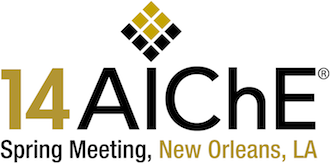

Dry reforming of methane (DRM) to syngas (H2 and CO) has been well-studied over a number of catalysts. The high temperatures needed to produce syngas inevitably result in carbon formation. Although pyrochlores are known to be thermally stable at conditions required for dry reforming, there is very little literature on this reaction for these catalysts. Catalytically active metals like Rh and Ru can be isomorphically substituted into the crystalline structure of the pryrochlores to produce stable catalyst. These materials also resist carbon formation due to their inherent oxygen conductivity at conditions required for DRM. Here, we report the use of Rh-substituted- lanthanum zirconate (La2Zr2O7) pyrochlores for DRM. Specifically three catalysts (a) unsubstituted lanthanum zirconate (LZ) for baseline comparison, (b) 2% and (c) 5% (by wt) Rh-substituted L2RhZ and L5RhZ pyrochlores were characterized using CH4 and H2 temperature programmed reduction (TPR) and their activity was studied at different temperatures of 550 ºC, 575 ºC, and 600 ºC. H2 TPR showed that the reducibility of the pyrochlore increases with an increase in the metal substitution. CH4 TPR clearly shows that the lattice oxygen in pyrochlores is reactive and helps limit carbon formation. Activity results showed that the CH4 and CO2 conversion increase with an increase in active metal substitution into the pyrochlore lattice.
